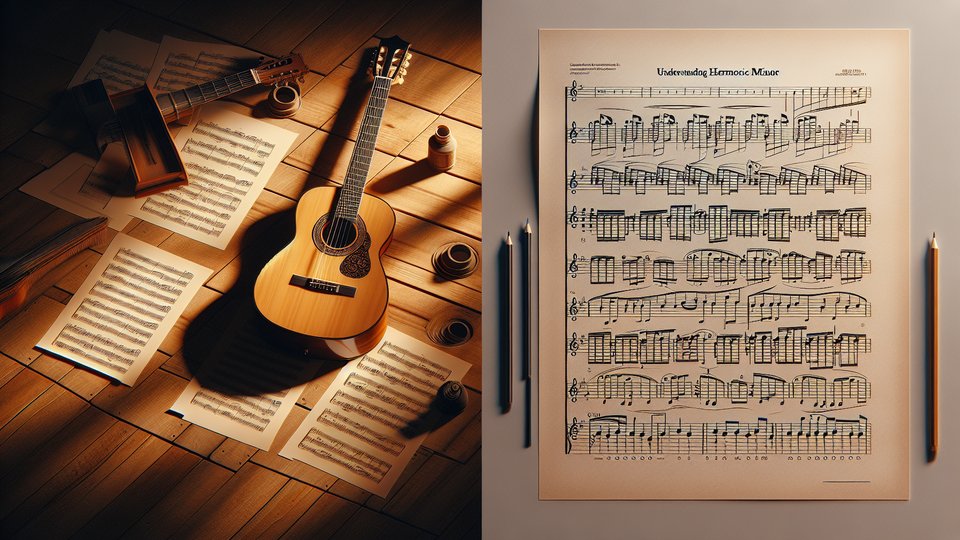
Understanding harmonic minor and its applications on the guitar can greatly enhance your playing and add a new dimension to your music.
Understanding harmonic minor and its applications on the guitar can greatly enhance your playing and add a new dimension to your music. The harmonic minor scale is a variation of the natural minor scale that raises the seventh note by a semitone. This alteration creates a unique sound that is both exotic and intriguing, making it a popular choice in various musical genres, including classical, jazz, and metal.
To grasp the harmonic minor scale on the guitar, it's essential to first familiarise yourself with the scale pattern across the fretboard. Our [tool for learning the notes of the fretboard] can be a valuable resource in this regard, helping you visualise and memorise the scale positions. Once you have a good understanding of the scale pattern, you can start incorporating it into your playing to explore its rich harmonic possibilities.
One of the distinctive features of the harmonic minor scale is the augmented second interval between the sixth and seventh notes, which gives it a mysterious and exotic flavour. This interval can be utilised to create tension and add colour to your solos and melodies. By practicing arpeggios based on the harmonic minor scale, you can further enhance your understanding of its harmonic structure and develop your improvisational skills. Our [arpeggios tool] can assist you in mastering these essential patterns.
In addition to soloing, the harmonic minor scale can also be used to create captivating chord progressions and harmonies. By building chords using the notes of the scale, you can experiment with different harmonic textures and create a unique sonic palette for your compositions. Understanding the relationship between chords and scales is crucial for composing and arranging music effectively.
To illustrate the versatility of the harmonic minor scale on the guitar, let's consider its application in a melodic context.  In this example, we can see how the scale can be used to create a haunting melody with its distinct intervals and unique character. By exploring different melodic ideas and phrasing techniques, you can unlock the expressive potential of the harmonic minor scale in your playing.
In this example, we can see how the scale can be used to create a haunting melody with its distinct intervals and unique character. By exploring different melodic ideas and phrasing techniques, you can unlock the expressive potential of the harmonic minor scale in your playing.
Moreover, the harmonic minor scale can be combined with other scales and modes to create interesting harmonic blends and modulations. By experimenting with different scale combinations, you can push the boundaries of conventional harmony and create innovative musical landscapes. Our [ear training tools] can help you develop a keen ear for recognising these harmonic relationships and integrating them seamlessly into your playing.
In conclusion, the harmonic minor scale offers guitarists a wealth of creative possibilities to explore and incorporate into their playing. Whether you're looking to spice up your solos, compose captivating melodies, or experiment with new harmonic textures, the harmonic minor scale is a valuable tool in your musical arsenal. By delving into its intricacies and experimenting with its applications, you can elevate your guitar playing to new heights and discover a world of musical expression. 